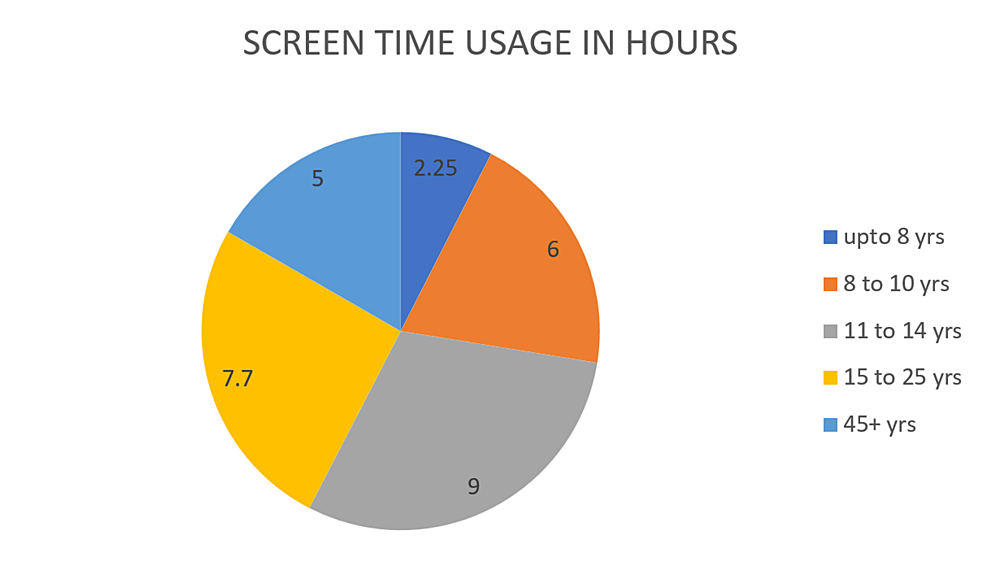In today’s digital age, technology is an inseparable part of our lives. For adults, smartphones, tablets, and computers have become indispensable tools for communication, work, and entertainment. However, an alarming trend is emerging among America’s youngest population: children are becoming increasingly obsessed with electronic devices, often to the detriment of their mental, physical, and emotional well-being. While technology offers immense benefits, the overuse of digital devices among children presents a unique set of challenges that society must address.
The Rise of Digital Natives
 Today’s children are often referred to as “digital natives” because they are growing up in a world where the internet, smartphones, and video games are the norm. Unlike previous generations, who witnessed the evolution of technology, children today are immersed in it from an early age. Tablets and smartphones are frequently introduced to toddlers to entertain or educate them, and by the time they reach elementary school, many children are already proficient in using a wide range of digital devices.
Today’s children are often referred to as “digital natives” because they are growing up in a world where the internet, smartphones, and video games are the norm. Unlike previous generations, who witnessed the evolution of technology, children today are immersed in it from an early age. Tablets and smartphones are frequently introduced to toddlers to entertain or educate them, and by the time they reach elementary school, many children are already proficient in using a wide range of digital devices.
According to a 2022 report by Common Sense Media, children in the U.S. between the ages of 8 and 12 spend an average of almost five hours per day on screens, while teens (ages 13–18) spend about eight hours a day. These numbers don’t include time spent on devices for schoolwork, highlighting how significant non-educational screen time has become in children’s lives. As screen time increases, so do the concerns surrounding its potential effects.
The Impact on Physical Health
 Excessive screen time can negatively affect children’s physical health in several ways. One of the most immediate consequences is the reduction in physical activity. Hours spent scrolling, gaming, or watching videos are hours that could otherwise be spent playing outside, exercising, or engaging in sports. This sedentary lifestyle contributes to an increase in childhood obesity, a growing public health concern in the United States.
Excessive screen time can negatively affect children’s physical health in several ways. One of the most immediate consequences is the reduction in physical activity. Hours spent scrolling, gaming, or watching videos are hours that could otherwise be spent playing outside, exercising, or engaging in sports. This sedentary lifestyle contributes to an increase in childhood obesity, a growing public health concern in the United States.
The negative physical impact doesn’t end there. Prolonged use of electronic devices can lead to problems such as eye strain, headaches, and sleep disturbances. Blue light emitted by screens has been shown to interfere with the production of melatonin, the hormone responsible for regulating sleep. As a result, many children experience difficulty falling asleep or staying asleep, which can lead to chronic sleep deprivation and its associated risks, such as impaired cognitive function and poor academic performance.
Mental and Emotional Challenges
The psychological effects of excessive screen time on children are also a growing concern. Numerous studies suggest that overexposure to digital devices can negatively impact a child’s attention span, social skills, and emotional regulation. With constant access to stimulating content—whether it’s social media, video games, or streaming services—children may struggle to focus on tasks that require sustained attention, such as homework or reading.
Moreover, the addictive nature of many apps and games is designed to keep users engaged for as long as possible, leading to compulsive behavior in children. Many parents report difficulties in limiting their child’s screen time, with some children exhibiting tantrums or mood swings when asked to put down their devices. This dependency on digital entertainment can foster a sense of anxiety or agitation when access is restricted, further complicating the problem.
Social media, in particular, poses unique risks for children and teens. As they are exposed to a constant barrage of curated, idealized images and lifestyles, young users are more vulnerable to feelings of inadequacy and low self-esteem. Cyberbullying, too, is a significant concern, as online platforms provide an anonymous environment where harmful behavior can thrive.
The Strain on Parent-Child Relationships
Another casualty of children’s obsession with electronic devices is the quality of family interactions. Many parents find it challenging to compete with the instant gratification provided by smartphones and tablets. Family dinners, conversations, and other bonding activities are often interrupted by notifications or the lure of a new YouTube video. As children become more absorbed in their digital worlds, face-to-face interactions suffer, and opportunities for meaningful connection diminish.
In a world where busy schedules are the norm, handing a child a tablet or phone can be an easy solution to keep them occupied. This practice, though convenient, may exacerbate the issue by normalizing excessive screen use and reducing opportunities for real-world experiences.
The Role of Schools and Education
As schools increasingly integrate technology into their curricula, it becomes even harder for children to disconnect from screens. While digital learning tools can enhance education, they also blur the lines between productive and recreational screen time. During the COVID-19 pandemic, remote learning further amplified this challenge, as children were required to spend even more time online for school.
The concern is not only about the sheer volume of time spent in front of screens but also about how it affects children’s ability to concentrate and learn. When children are conditioned to expect constant stimulation from their devices, they may find it harder to engage in deep, focused learning that requires patience and perseverance.
Finding Balance
While it’s unrealistic—and arguably unnecessary—to suggest that children should avoid digital devices altogether, striking a healthy balance is essential. Parents, educators, and policymakers must collaborate to mitigate the negative effects of excessive screen time while still harnessing the benefits that technology offers. Here is my suggested action plan for finding digital balance:
- 1Parental Involvement: Parents play a crucial role in setting boundaries around screen time. Limiting usage, especially during meals, family time, and before bed, can help children develop healthier habits. Encouraging physical activity, outdoor play, and face-to-face interactions is equally important.
- 2Promote Digital Literacy: Instead of simply restricting access to technology, it’s vital to teach children how to use it responsibly. Digital literacy education can help children understand the risks of online behavior, recognize misinformation, and make informed choices about their screen use.
- 3Encouraging Offline Activities: Provide more opportunities for extracurricular activities that promote physical and social engagement. Arts, sports, and clubs can offer children meaningful alternatives to screen-based entertainment.
- 4Mindful Use of Technology in Education: While technology can be a powerful educational tool, schools should ensure that it is used in ways that support, rather than detract from, learning. Striking a balance between digital and traditional learning methods can help students develop critical thinking skills and reduce their reliance on constant digital stimulation.
Mat Monkeys Martial Arts for Kids can Help
Our Mat Monkeys Martial Arts for kids program can be an excellent way to help children reduce excessive digital screen time by providing a structured, engaging, and physical alternative. We wanted to create the best physical education program for primary aged children and leverage the power of Martial Arts as both physical and mental discipline. Here’s how Mat Monkeys can help shift kids focus from screens to a healthier, more balanced lifestyle:
Mat Monkeys is physically demanding and immersive, offering kids a dynamic alternative to sedentary activities like gaming or browsing on screens. Classes are engaging, often featuring fast-paced drills, partner activities, and skill-building exercises, which capture children’s interest and keep them engaged in the moment.
Mat Monkeys emphasize concentration and mindfulness, teaching kids to be fully present during training. Skills like controlling breathing, focusing on movement, and observing form require their full attention, helping to develop mental discipline that can carry over into managing their screen time more intentionally.
Regular martial arts classes, like Mat Monkeys, help establish a structured routine that can reduce spontaneous screen time. Knowing they have training sessions to attend, kids are more likely to manage their after-school time effectively. Additionally, they often receive guidance on balancing various aspects of life, reinforcing the importance of spending time away from screens.
Mat Monkeys provide a social environment where kids interact with peers, instructors, and sometimes even parents. This real-life social interaction can fulfill some of the connection needs that screens might otherwise fulfill, helping kids feel less dependent on social media or online activities.
Martial arts promote self-discipline, self-control, and respect for oneself and others. As kids progress in the Mat Monkey program and achieve new ranks or skills, they build confidence, which can lead to healthier self-esteem. With stronger self-esteem, they may feel less drawn to the validation and entertainment screens provide and are more inclined to take breaks from devices.
Our Mat Monkeys program emphasize setting personal goals, whether through mastering a new technique, performing a physical skill well, or achieving a new stripe. These goals provide a tangible sense of achievement that is more fulfilling than the instant gratification screens often offer, encouraging kids to dedicate more time to their practice.
The philosophy behind Mat Monkeys is foundational to the Warrior Lifestyle which includes the idea of a balanced lifestyle, self-care, and respect for one’s body. This message can have a lasting impact, helping kids recognize that limiting screen time is part of maintaining physical and mental health. Kids often look up to their instructors as role models, which can reinforce the importance of this balance.
Conclusion
America’s children are growing up in a world dominated by electronic devices, and while this brings certain advantages, it also presents significant challenges. As we witness the growing obsession with screens, it becomes clear that action is needed to protect the health and well-being of the next generation. By fostering a balanced approach to technology, we can help children develop the skills they need to thrive both online and offline, ensuring a healthier future for all.
By incorporating Mat Monkeys Martial Arts for kids into a child’s routine, parents can help reduce digital screen dependency while giving their child a productive, skill-building, and socially enriching alternative. Martial arts not only curb excessive screen time but also build habits and mindsets that benefit children both mentally and physically.






